MARATEA, ITALY - At the end of another glorious day, with the setting sun spotlighting this tranquil town’s many church spires, I take a seat at a café in Maratea Borgo (Old Town) and order a glass of local vino.
My charming young server jokingly tells me Maratea is “the Holy City” of southern Italy because “we have so many churches in this small town.”
There are actually 44 churches crammed into the tiny space Maratea occupies in this spectacular coastal region of Italy, a two-hour train ride south of Naples.
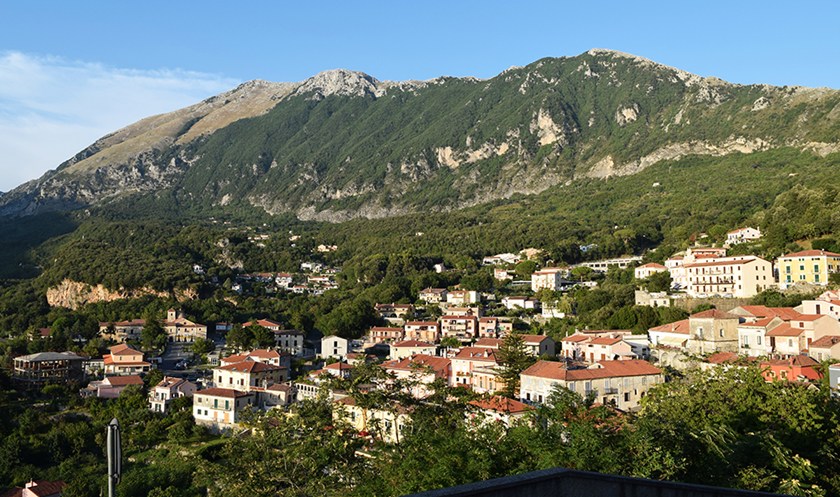
Above: Beautiful Maratea sits nestled in volcanic mountains overlooking the sea.
Nestled in the bosom of lush volcanic mountains that dominate this sun kissed coastline, Maratea — aka The Pearl of the Tyrrhenian — is one of the most beautiful villages in all of Italy and one of the country’s best-kept secrets. While a favourite vacation spot for domestic tourists — they come here in their boats and yachts and explore the caves along the region’s honeycomb coastline — few foreigners ever come. Pity!
Maratea is an ancient place with archeological findings that date all the way back to the 15th century BC, when a small trading post was established here. Greeks, Romans, French and a few other conquering armies have all camped on the hillsides surrounding this charming town with the many cotton candy-coloured homes. The Greeks stayed long enough to build a temple dedicated to the goddess Minerva, which Maratea’s Basilica of Saint Blaise was built over.
“Before you leave, you must visit our basilica and our beautiful Christ statue up there,” says my server while pointing to the mountain where Maratea’s Basilica and the Cristo Redentore di Maratea — a modern version of Rio de Janeiro’s Christ the Redeemer statue — reside.
The sacred remains of the town’s patron saint, Saint Blaise, lie in the Basilica’s alter — they were put there in 732 AD — and many Italians make the pilgrimage to Maratea to pay their respect.
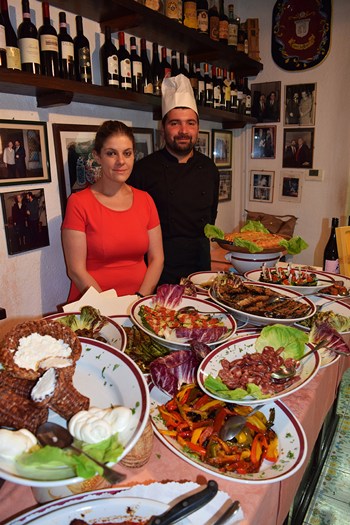
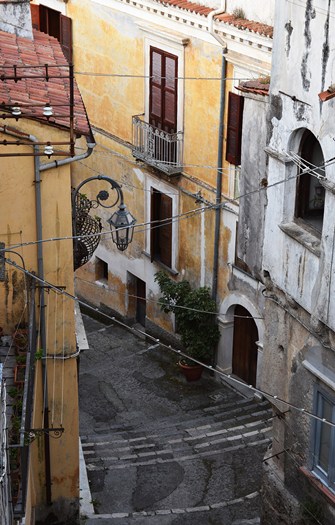
Above: On the narrow old streets of Maratea you find Taverna Rovita, left.
By the time I’ve finished my second glass of wine, the sun has dipped into the sea and the evening air in the square is accented with spicy aromas coming from the narrow streets leading off it.
“If you are hungry, I suggest you try Taverna Rovita, where they serve some very delicious local cuisine,” says the young woman as she directs me to a small alley where I find the family restaurant owned by a delightful woman named Mariasteua Gambardella and her husband Ciccio.
Mariasteua welcomes the stranger like a long-lost friend and introduces me to the antipasto table set up near the entrance. It’s overflowing with colourful regional fare — lots of eggplant and red pepper dishes that have been grilled to perfection by Head Chef Otera Gennaro.
The menu is highlighted with lots of seafood and the octopus prepared in a clay pot with olive oil and locally grown vegetables quickly jumps onto my Top 10 Meals Ever list. However, that’s quickly overtaken by the thinly sliced zucchini stuffed with ricotta cheese and peppers. Every dish Mariasteua serves me is better than the last and the flavours dance on my tongue long after the meal ends.
The 700-year-old building in which the restaurant is located seeps charm — oh, if only these walls could talk. Diners from every corner of the globe cram the narrow room and the lively chatter makes for a charming evening.
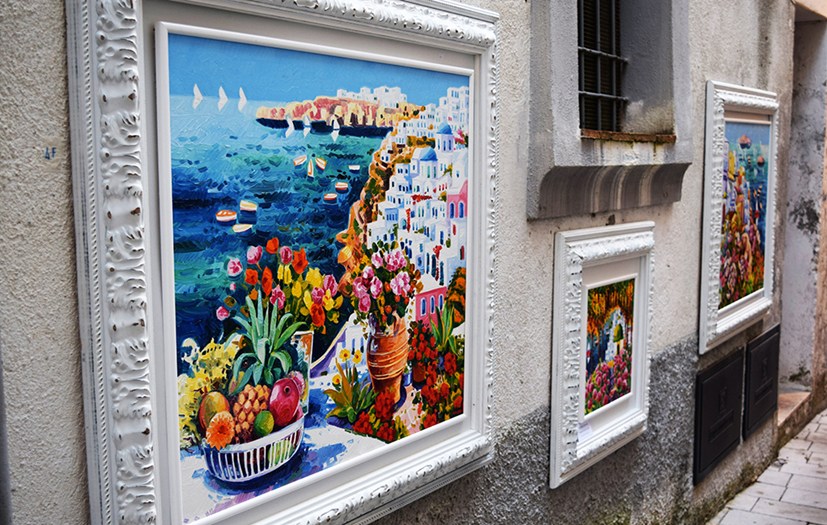
Above: Maratea is a place where artists come to capture the beauty on canvas.
Next morning, I set out along the narrow road that leads from the coast to the summit of Mount San Biagio, where the Basilica of Saint Blaise and the Cristo statue are located. The air is perfumed with the scents of fennel and rosemary, which grow in abundance along the roadside. Around each corner I get another breathtaking view of the coastline and Maratea’s small harbour, which can accommodate about 200 boats.
A small tour bus takes me the final few metres to the entrance of the charming basilica, which was built in the 7th century to honour the beloved saint. Every year, on the second Sunday of May, locals hold a procession in which a silver statue of Saint Blaise is transported from the top of the mountain to the Church of Saint Vitus, Maratea’s oldest church, which dates back to the 9th century.
The church was financed by Philip II of Spain to honour the 4th-century doctor, who later became bishop of ancient Armenia and was martyred on Feb. 3, 319 AD. He is one of the most popularly venerated saints, by both the Roman Catholic and the Orthodox churches.
The interior of the basilica is simple, with its stained glass window standing out as its most fascinating architectural feature.
It’s just a short walk from the basilica to Cristo Redentore di Maratea, who stands with his back to the sea looking down on the basilica and Maratea. The ghostly white statue is indeed an imposing site and portrays Christ as a young man with little facial hair.
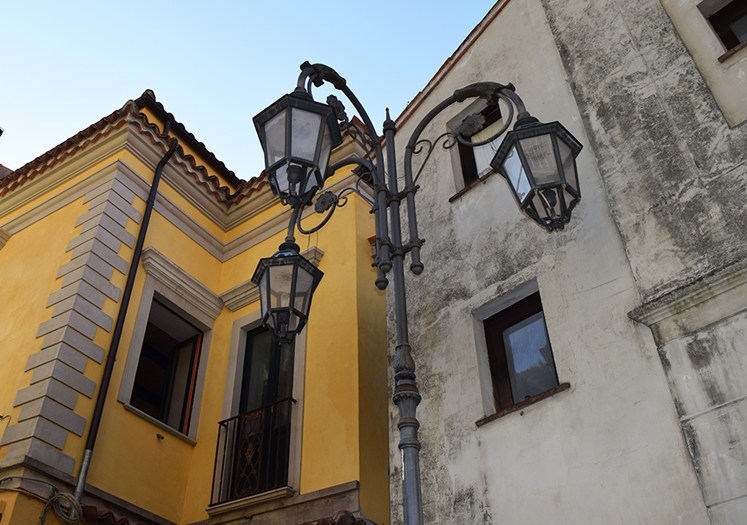
Above: The tranquil lifestyle in Maratea would be hard to match anywhere.
From my vantage point at the feet of the statue, I can see as far south as Calabria and along the coast I notice a group of towers perched on outcrops high above the sea. Later, I’m told the towers — six in all — were used for communication purposes in ancient times. Signals were sent up and down the coast of impending danger or fierce weather. Now the towers have been transformed into vacation homes mostly owned by wealthy business people from Naples.
A highlight of most visits here is to explore the caves among the coast. There are lots to choose from and many tourist companies offer daily excursions to the caves. The most important of the caves is the Grotta di Maratea (Cave of Wonders), which was discovered by workmen in 1929 while building the main road (Hwy. 18) that connects Maratea to sun-drenched Calabria.
The Cave of Wonders is 90 metres long and is the smallest natural cavity in Italy. With only about seven metres of clearance, it’s a tight fit for most tourists, but the stalactites and spaghetti-like stalagmites inside make it well worth a visit. The cave is especially popular during Maratea’s stifling summer heat — the temperature inside the Cave of Wonders remains a constant 15C to 18C all year long.
After a day of exploring the area around Mount San Biagio, which is dotted with other charming Italian towns that seem lost in time, I make my way back to the Old Town square just in time to enjoy more of the local wine and to see the sun drop back into the Tyrrhenian Sea.
The bells of the Church of Santa Maria Maggiore, circa 1505 AD, serenade me as I toast this gift from God called Maratea.
Information
For information on Taverna Rovita, go to
www.tavernarovitamaratea.it or call 347 6015409 / The best place to base yourself in Maratea is the delightful Hotel Santavenere, a 5-star property which offers breathtaking views of the coastline and accommodation that can’t be matched anywhere in southern Italy. To find out the best time of year to visit this remarkable propertyy, visit the their website
www.hotelsantavenere.com / The best way to get to Maratea from Canada is with Alitalia via Rome and Naples. Maratea is located two hours south of Naples by train.
About the Author
Marc Atchison is a veteran journalist and a seasoned traveller with more than 20 years of travel writing experience. As the former Travel Editor of the Toronto Star, Canada's largest newspaper, and now Editor-in-Chief and Senior Writer for TraveLife magazine (Canada) and travelife.ca, Marc has been to over 100 countries in the world. Japan is one of his favorite destinations and he's been there on numerous occasions.